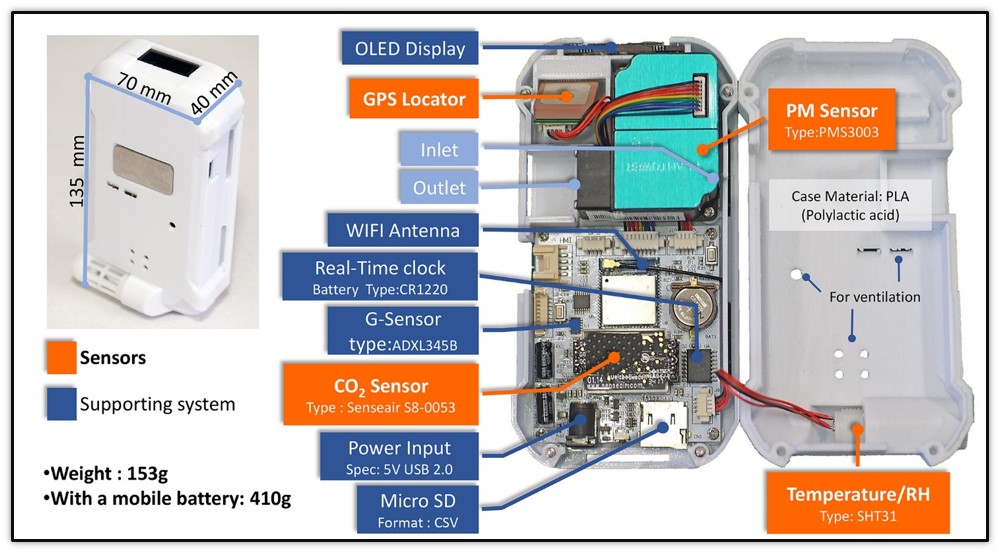


This work applied a newly developed low-cost sensing (LCS) device (AS-LUNG-P) and a certified medical LCS device (Rooti RX) to assessing PM2.5 impacts on heart rate variability (HRV) and determining important exposure sources, with less inconvenience caused to subjects.
Observations using AS-LUNG-P were corrected by side-by-side comparison with GRIMM instruments. Thirty-six non-smoking healthy subjects aged 20-65 years were wearing AS-LUNG-P and Rooti RX for 2 to 4 days in both summer and winter in Taiwan. PM2.5 exposures were 12.6 ± 8.9 µg/m3. After adjusting for confounding factors using the general additive mixed model, the standard deviations of all normal to normal intervals reduced by 3.68% (95% confidence level (CI) = 3.06-4.29%) and the ratios of low-frequency power to high-frequency power increased by 3.86% (CI = 2.74-4.99%) for an IQR of 10.7 µg/m3 PM2.5 , with impacts lasting for 4.5-5 hours. The top three exposure sources were environmental tobacco smoke, incense burning, and cooking, contributing PM2.5 increase of 8.53, 5.85, and 3.52 µg/m3, respectively, during 30-min intervals. This is a pioneer in demonstrating application of novel LCS devices to assessing close-to-reality PM2.5 exposure and exposure-health relationships. Significant HRV changes were observed in healthy adults even at low PM2.5 levels.
Key points
More information